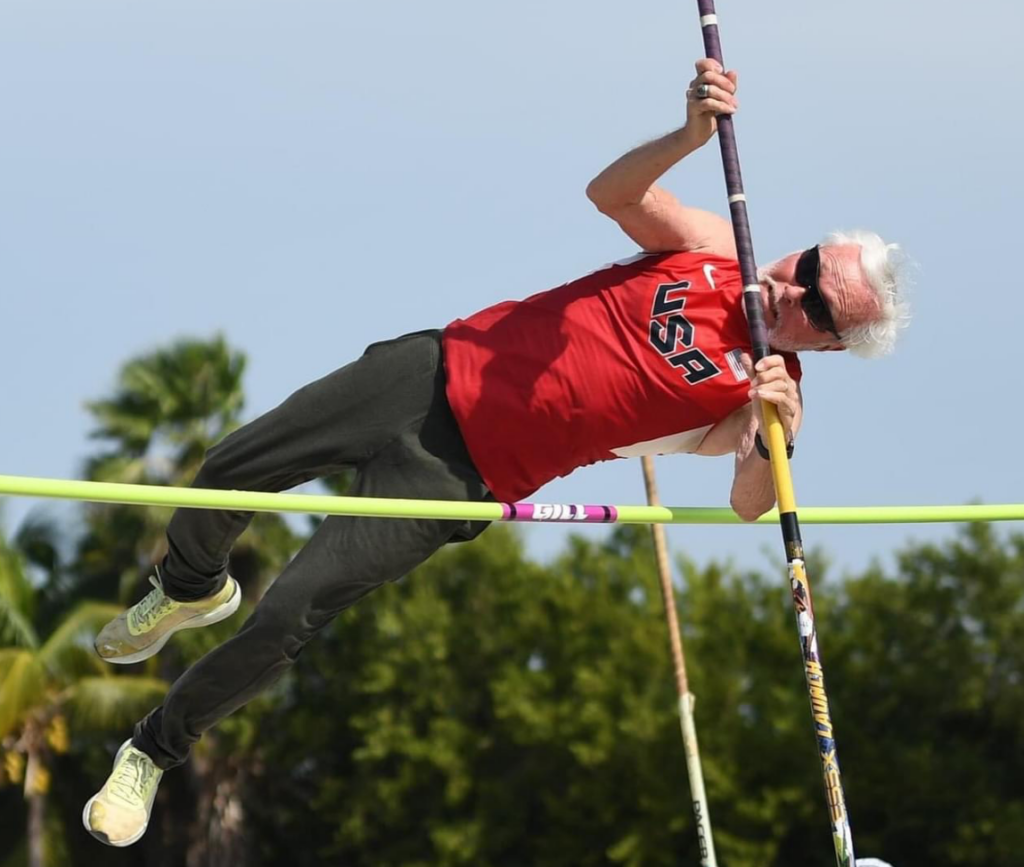Coppell Trainer Tip –
Running Form by Get You In Shape Personal Trainer – Kristi Walthall
There are 4 factors to consider when working on your running form:
1. Body lean
2. Stride length (over-striding)
3. Arm swing and hands
4. Foot fall
To have efficient running posture, first stand tall, with a slight forward lean through the hips and with your head slightly forward. Your focus should be about 8 to 15 feet in front of you with your chin slightly down. While running, your mouth should be slightly open, while breathing naturally through your nose and mouth. Have your arms at 90-degress with your hands loosely cupped.
Body Lean
Often times, I’ve seen runners at boot camp with inefficient body lean. What do I mean by that? While standing tall and straight, try hunching your shoulders into a “C” so that your chin is tucked toward your chest. Notice 3 problems when you do that:
1. Trying to breathe – notice that it is hard to get a full breath because lungs and diaphragm are compressed.
2. Arms cannot be used as levers because shoulders are tight.
3. The curled C position fights gravity because your hips drop backward.
Another inefficient body lean I see quite often is bending too far forward in the hips. When you lean too far forward your buttocks drops backward behind the center of gravity. Your hamstrings contract, therefore you have no extension and less range of motion. This results in no power. I see this a lot when we run hills.
Stride Length
The most common error I see among runners is over-striding. (Yes, I am guilty of it too!) When over-striding, the landing foot is often placed heel first and in front of the hips. This causes jarring on the landing as the foot jams into the ground. The way you solve over-striding is trying to have shorter strides, thus less time in the air. Another way to solve the over-stride is trying to maintain a faster cadence of 180 steps per minute. Also focus on quicker arms swing, with no open elbow.
Arm Swing and Hands
As crazy as it sounds, the secret to better running is actually in your arm swing and hands. Arms are the key to running efficiently. Energy is wasted with side-to-side swings, backward swings or cross country skier swings. You should have your hands gently cupped (no thumb up), perhaps with the thumb lightly on top of the pointer finger. My Dad would always tell me to act like I am holding baby birds. You want your hands to swing from hip line to chest line while keeping your elbows in. Thinking about your elbows is the key to making improvements in your overall running by helping you waste less energy with the swing.
Example “Bad Form” Exercises
1: Raise arms into running form, shrug shoulders. Try to run like that. Notice that you have a very compact motion with no power & the muscles around your shoulders are tight.
2: Try having your arms straight & elbows locked. Notice that it creates a long pendulum & gives you no power or energy to the center of gravity.
3: Try sweeping your arms across your body right to left shoulder like a cross country skier. Notice how the energy swings past your center of gravity and torques your shoulders creating inefficient force while your hips rotate.
Foot Fall
I often see people land on their foot and rotate in or out. Pronation is the inward rotation of the foot, toeing off on the inside of the foot (more common) and supination is the rotation to the outside, toe-off is on the outside of the foot. When you pronate or supinate, the ankle and mid-foot joints lock and become rigid. The foot then becomes a lever, allowing for the power in the toe off either on the inside of the foot (pronation) or outside of the foot (supination).
Focus on what part of your foot is striking the ground. In heel striking, the collision of the heel with the ground generates a significant impact transient, a nearly instantaneous, large force. This force sends a shock wave up through the body via the skeletal system. In forefoot striking, the collision of the forefoot with the ground generates a very minimal impact force with no impact. Therefore, quite simply, a runner can avoid experiencing the large impact force by forefoot striking properly.
At the end of the day, there is no “perfect” right or wrong way to run. I’ve seen “Phoebe” runners with crazy gait beat me in races & it drives me bonkers! These are just some small tips to help you be more efficient and likely to prevent injury down the road. Don’t “overthink” it. Just get out there and run. Keeping these small pointers in mind from time to time will help you be more efficient.
Coppell Personal Trainer Tip from Get You in Shape Trainer Kristi Walthall
Fitness Programs close to Coppell, Dallas, Las Colinas, Irving, Valley Ranch, Lewisville, Flower Mound, Grapevine, Carrollton, and other Dallas Cities Services include: Personal Trainer, Fitness Boot Camps, Corporate Wellness, Advocare 24 Day Challenge, Nutritional Programs, Weight Loss programs



